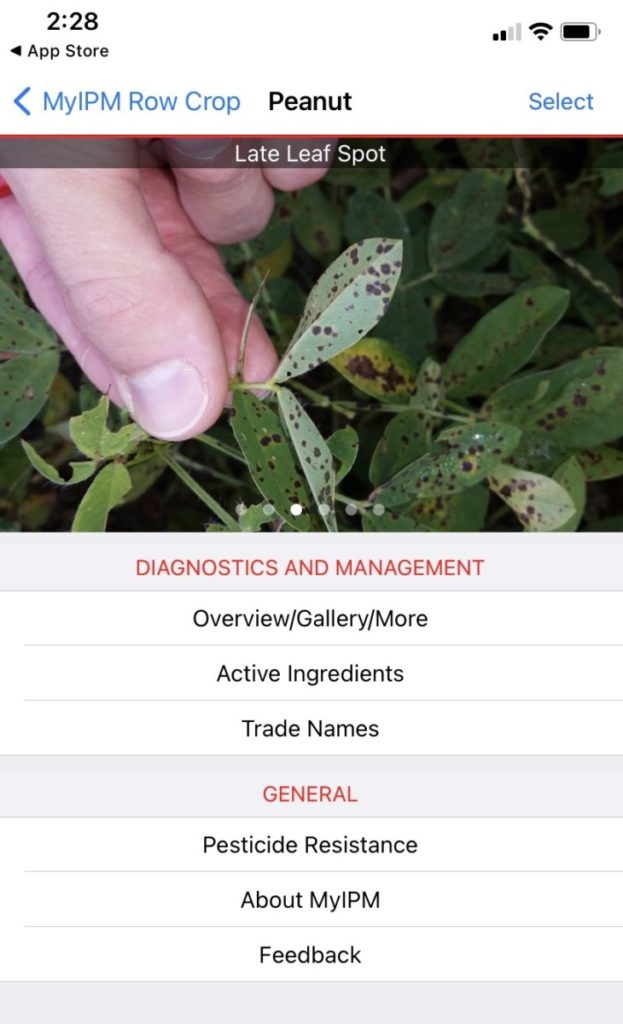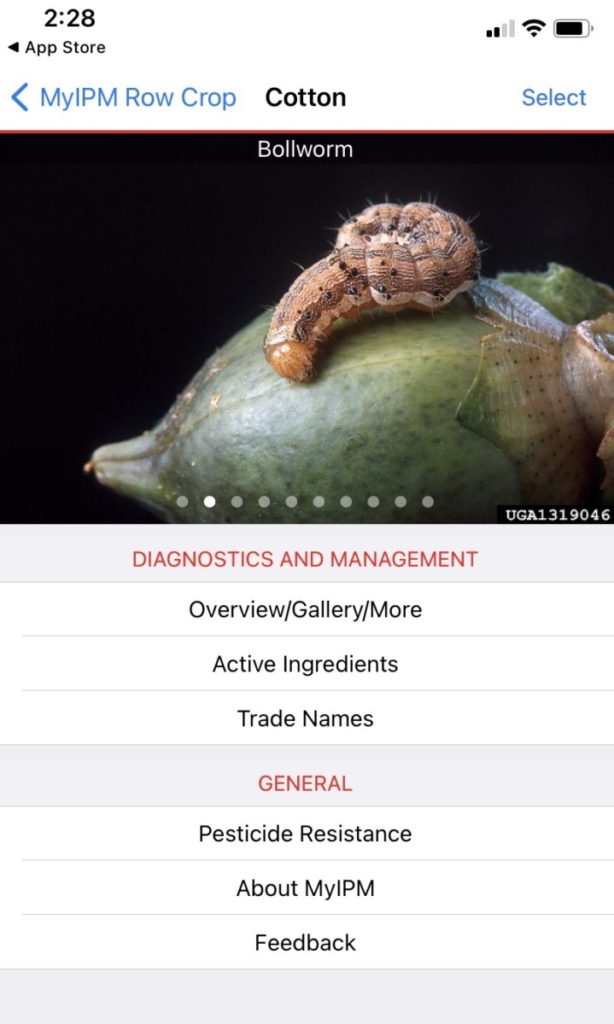Written by: Emily Cabrera, UGA IPM Communications Coordinator
Expert/Source: Dr. Brett Blaauw, Assistant Professor & Peach Specialist, University of Georgia
A new insect wreaking havoc in your cotton field? Troublesome disease in your peanut stand you don’t recognize? No idea where to start? Well, there’s an app for that.
This year, farmers have a new tool to help them diagnose and combat pests and diseases in row crops. A companion app to the original MyIPM app for fruit and nut crops, Clemson University IPM Coordinator, Francis Reay-Jones, led the development and release of the new MyIPM Row Crops app that promotes integrated pest management tactics for the most common insect pests and diseases in corn, cotton, grain sorghum, peanut and soybean.


The original MyIPM app was first developed by plant pathologist Guido Schnabel at Clemson University to address strawberry disease management, said Brett Blaauw, peach specialist with the University of Georgia and collaborator on the app series. But over time, as demand for this resource grew, additional specialists were invited to contribute to expanding these services to meet the needs of other crops and commodities.
The apps are designed to work in tandem with annual Extension production guides and the Georgia Pest Management Handbook by providing image galleries, fact sheets and audio descriptions to help users identify and manage pests.
The apps are regularly updated through a collaboration of Extension specialists from several land grant universities and the Southern IPM Center.
“And that’s really the most amazing thing about these apps, is that with as much input as they receive from specialists around the country, the apps are completely free,” explained Blaauw.
Updates are instantly pushed out to devices with the downloaded apps, and once content is downloaded or updated on a device, the information can be accessed offline for use in the field.
The apps include the following features:
- Diagnostics, including descriptions and picture galleries of fruit crop diseases, pests, and disorders.
- Name and description of the causal agents, including a 2 to 4 min audio from the regional specialist
- Chemical, biological, and cultural control tactics
- Interactive tables featuring registered conventional and biological active ingredients for each disease/pest, sortable by FRAC codes, FRAC risk, and efficacy
- Active ingredients and trade names that are linked to each other
- Trade names and their rates per acre, PHI values, REI values, risk to the environment, field worker, and pollinators
- Search feature to list active ingredients and trade names for each disease/pest together with efficacy and rate per acre
Users can quickly see which crops and diseases a product is registered for, at what rate it is used and how effective it will be. One of the most important features of both apps helps users sort chemicals by groups and generate a plan to rotate or mix active ingredients to optimize performance and mitigate fungicide resistance. Information about resistance risk for each product reminds users to be careful and follow strict resistance management guidelines.
And while the target audience is primarily commercial growers in terms of the chemical recommendations provided by both apps, Blaauw explains that many of the identification, diagnostic and cultural management tools are beneficial for homeowners as well.
For more information on the MyIPM and MyIPM Row Crops apps, visit https://apps.bugwood.org/.